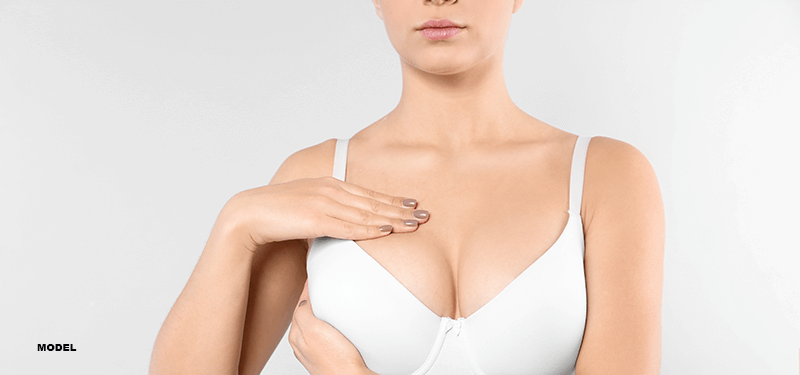Understanding Breast Lift Scars: What to Expect

Breast lift surgery (Mastopexy) is a transformative plastic surgery procedure with the ability to lift and restore sagging breasts; dramatically enhancing the chest and entire silhouette. Many women consider breast lift surgery to enhance their appearance and regain confidence. However, one common concern that often arises is whether the procedure will leave noticeable scars.
Scarring is a valid concern, as nobody wants to exchange sagging breasts for unsightly marks. In this article, we will explore the topic of breast lift surgery and its potential impact on scarring, providing you with the information on what to expect along with ways to minimize or treat any resulting scars.
Does Breast Lift Surgery Cause Scarring?
Like any surgical procedure involving incisions, breast lift surgery can cause some degree of scarring. However, its important for prospective patients to understand that the extent and visibility of scarring can vary from person to person and depend on various factors, including the surgical technique used, patient genetics, and skin characteristics. Additionally, experienced plastic surgeons can place their incisions with a focus on hiding or camouflaging any resulting scars. Finally, there are numerous scar treatment options to further minimize the appearance of scarring that does not fade overtime.
Where Can Scars Develop?
Since breast lift scars are the result of incisions, the location of any resulting scars is directly related to the type of mastopexy technique performed. Here is a brief overview of common breast lift techniques and the resulting scars they can produce:
Crescent lift
The crescent lift technique involves a small incision along the upper edge of the areola. It is often used for mild breast sagging and can result in minimal scarring.
Donut lift
In a donut lift, surgeons create a circular incision around the areola. This technique is suitable for addressing moderate breast sagging and can result in a scar that encircles the areola.
Lollipop lift
The lollipop lift combines a vertical incision from the areola to the breast crease with the circular incision around the areola. This technique is effective for addressing moderate to severe sagging and results in scars shaped like a lollipop.
Anchor lift
The anchor lift is the most extensive technique, involving an incision around the areola, a vertical incision down to the breast crease, and a horizontal incision along the breast crease. It is suitable for severe sagging but can result in more extensive scarring.
Horizontal Mastopexy
Horizontal mastopexy is a horizontal incision along the breast crease, which is ideal for correcting breast sagging without significant vertical lifting because the nipple is in a good position on the chest. This technique typically results in a horizontal scar.
What Do Breast Lift Scars Look Like?
Generally, breast incisions tend to heal very well. Initially, breast implant incisions may appear raised, swollen, red, or pink as they go through the healing process. However, over time, these scars tend to become less noticeable as the redness subsides, and the scars gradually smooth out. In fact, for many patients, the incisions fully heal and the resulting scars fade (both in color and texture) to a point where they are minimally visible.
Here is what to expect at different stages of the breast lift recovery process:
One week after surgery
At this stage, scars are still fresh and may appear red or pink. They may also be slightly raised and tender to the touch.
Two weeks after surgery
The redness and swelling usually begin to subside, but the scars may still be slightly raised. Proper wound care and following post-operative instructions are crucial during this period.
One month after surgery
By the one-month mark, scars typically continue to fade, becoming less red and more closely resembling the surrounding skin. However, they may still be slightly raised.
Three months after surgery
Around three months post-surgery, scars usually continue to improve in appearance. They become flatter and less noticeable. This is the stage where many patients start feeling more comfortable with the appearance of their scars.
One year after surgery
After a year, breast lift scars should be well-healed and significantly faded. In many cases, they will blend in with the natural skin tone and be hardly noticeable.
Ways to Minimize Breast Lift Scars
While it may not be possible to prevent scarring entirely, there are several steps patients can take to minimize the appearance of breast lift scars:
- Choose an experienced surgeon. Selecting a skilled and experienced surgeon is crucial. An experienced surgeon knows how to make incisions strategically to minimize their visibility.
- Follow post-procedure instructions. Adhering to the surgeon’s post-operative instructions, including wound care and follow-up appointments, is essential for optimal healing.
- Avoid sun exposure. Protect scars from sun exposure by wearing clothing that covers them and using sunscreen with a high SPF when exposed to sunlight.
- Massage the area. The surgeon may recommend massaging the scar tissue regularly. This can help break down scar tissue and promote smoother healing.
- Don’t smoke. Smoking can hinder the body’s healing process and increase the risk of complications. Quitting smoking before surgery and during the recovery period is strongly advised.
- Maintain a healthy lifestyle. Staying hydrated and consuming a nutritious diet can support the body’s healing processes.
- Wear a proper bra. A supportive bra can help minimize tension on the incisions and promote better scar healing. Follow the surgeon’s recommendations regarding bra use after surgery.
- Use a high-quality moisturizer. Once the incisions have fully healed, applying a high-quality moisturizer can help keep the skin soft and supple, reducing the appearance of scars.
Ways to Treat Scarring That Does Not Fade
In some cases, breast lift scars may not fade as expected, or they may become more prominent over time. Fortunately, there are various treatment options available to minimize the appearance of persistent scars:
- Hydrocortisone cream. Over-the-counter hydrocortisone cream can help reduce inflammation and itching in scars.
- Silicone sheets. Silicone sheets are a popular treatment option for scars. They are placed over the scar and can help flatten and fade it.
- Vitamin E products. Topical vitamin E products may promote skin healing and reduce the appearance of scars.
- Laser resurfacing. Laser therapy can be used to reduce scar pigmentation and texture, making scars less visible.
- Microneedling involves tiny needles that stimulate collagen production and can improve the texture of scars.
- Steroid injections. In some cases, steroid injections can help reduce the size and redness of scars.
- Scar revision surgery. If all else fails, scar revision surgery is an option. This procedure involves revising the existing scar to make it less noticeable or replacing it with a new incision in a more favorable location.
Breast lift surgery can provide remarkable results in restoring youthful breast contours. While scarring is an inevitable part of the process, it is generally well-tolerated and tends to improve significantly over time. By choosing a skilled surgeon, following post-operative instructions, and implementing scar-minimizing techniques, patients can achieve the best possible outcome and enjoy the newfound confidence that breast lift surgery can offer. If patients have concerns about breast lift scars, consult with a board-certified plastic surgeon to discuss options and develop a personalized treatment plan.
